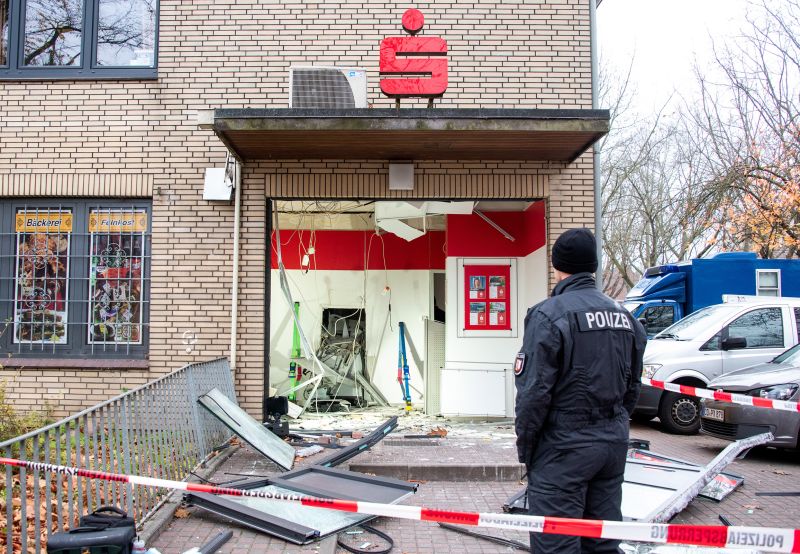
Germany: The Hotspot for ATM Heists – Why Criminals are Targeting Europe’s Biggest Cash Cow
In recent years, ATM attacks have become increasingly prevalent across Europe, with criminals successfully looting millions of euros from these machines.
One of the primary reasons behind these organized and sophisticated heists is the prevalence of cash-dependent societies in many European countries. Germany, in particular, has become a prime target for these criminal activities due to several key factors.
Firstly, Germany’s robust economy and stable financial sector make it an attractive location for criminals looking to make quick profits. The country’s dense network of ATMs scattered across cities and towns provides ample opportunities for criminals to target vulnerable machines.
Furthermore, Germany’s relatively lax security measures around ATMs have made it easier for criminals to carry out their attacks. Many ATMs in Germany are not equipped with adequate security features, such as tamper-proof technology or surveillance systems, making them easy targets for well-prepared criminal groups.
In addition, the geographical location of Germany within Europe makes it a strategic hub for criminal organizations operating across borders. The country’s proximity to other European nations allows criminals to plan and execute ATM heists with ease, often crossing borders to avoid detection by law enforcement agencies.
Moreover, the rise of digital technology and the emergence of sophisticated hacking methods have enabled criminals to exploit vulnerabilities in ATM systems, allowing them to gain access to cash reserves with minimal effort. Techniques such as jackpotting, skimming, and malware attacks have become common tactics used by criminal groups to target ATMs in Germany and beyond.
The lack of coordination and communication among European law enforcement agencies has also contributed to the rise of ATM attacks on the continent. Criminals are able to exploit loopholes in security protocols and move between countries undetected, making it difficult for authorities to track and apprehend those responsible for these crimes.
To combat the growing threat of ATM attacks in Europe, improved cooperation among law enforcement agencies, the banking sector, and technology companies is essential. Implementing stricter security measures, such as biometric authentication, real-time monitoring, and remote shutdown capabilities, can help deter criminals and protect ATM networks from being targeted.
In conclusion, the rise of ATM attacks in Europe, particularly in countries like Germany, underscores the need for proactive measures to safeguard financial infrastructure and protect citizens’ hard-earned money. By addressing the root causes of these crimes and implementing innovative security solutions, we can work towards creating a safer and more secure banking environment for everyone.
